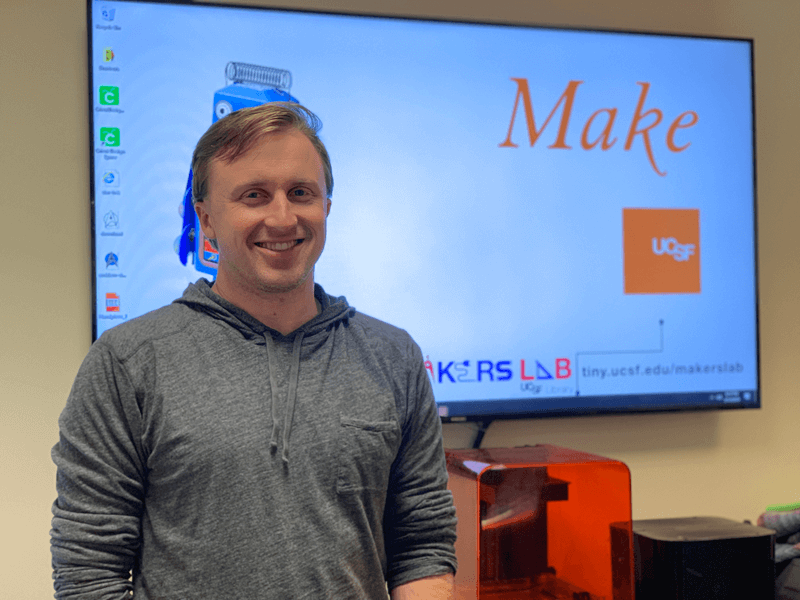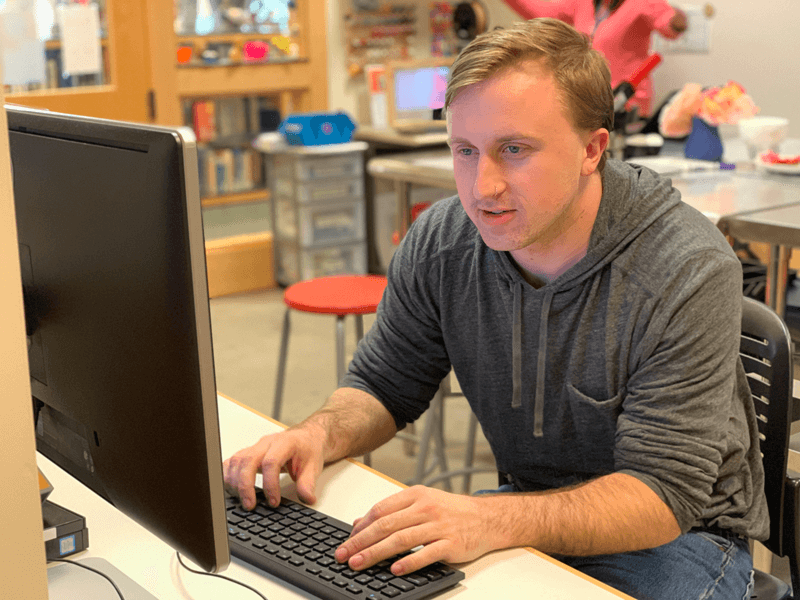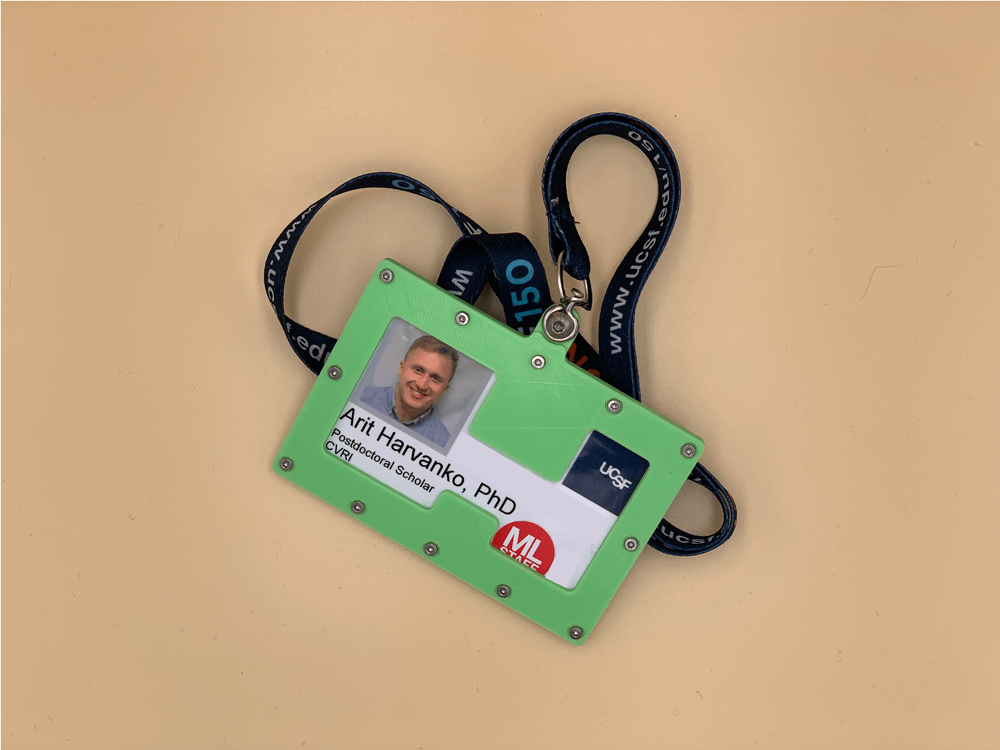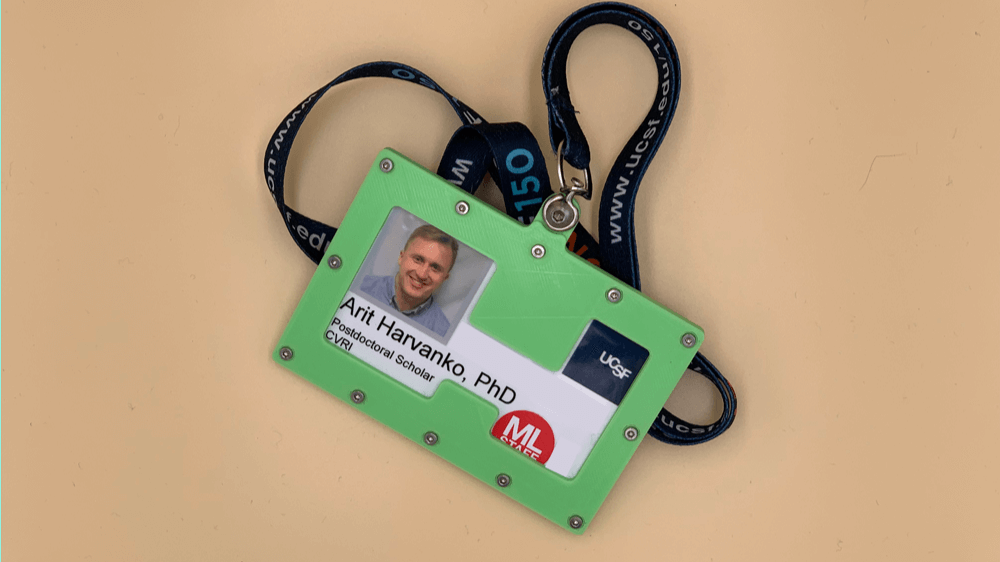This week’s maker is Arit Harvanko, UCSF post-doctoral scholar and Makers Lab volunteer. We caught up with Arit during one of his shifts in the Makers Lab to see what he has been working on.

Q: What did you make?
A 3D printed UCSF ID card holder.
Q: Why did you want to make it?
The original was dissatisfactory because the clip would always come off. It also serves as a demonstration for the CAD class I lead with Jenny and I have been using the design to test operations on the Carvey 3D carving machine.
Q: What was your process?
Part of the design process was due to the fact that I put my ID through the dryer that caused the ID to be wavy.
I first sat down with calipers and measured the ID card. I then sketched it up using Fusion 360 to create the ID card for reference. The ID holder design is fairly straightforward, but I did have to consider the clasping mechanism, fasteners, and hardware.
Next, I put together a design for 3D printing. 3D printing is nice because I can quickly print a prototype at low cost and identify design issues. I go back, fix, repeat, and then assemble.
I used PLA++ filament because of its strength and I chose the green color because it was what I had leftover from making accent parts for a motorcycle project.
You can use 3D printing for virtually anything, but I eventually wanted to create the ID holder using subtractive manufacturing or 3-axis machining. I would prefer to make the ID holder out of aluminum, which I will be able to do with the Carvey in the Makers Lab.

Q: What was the hardest part of the process?
Waiting for the amount time the 3D printers take to print compared to subtractive manufacturing that would take minutes.
Q: What was your favorite part of the process?
Getting the first 3D printed iteration done and seeing the realization of the project.

Q: How did this help make you a better postdoc?
Part of it is that it is not what I do as a postdoc. It is something intellectually stimulating that is not directly related to my research; it helps keep a good work/life balance. But, I also use 3D printing to create tools for research purposes.
Q: What do you want to make next?
A motorcycle telemetry data-logging device. It allows me to log data on driving behaviors and vehicle performance statistics. The device will incorporate an Arduino microcontroller, accelerometer, GPS, linear encoder, and 3D printed enclosures and adapters. I’ll start with 3D printed PLA but eventually might prefer to use injected ABS after the initial prototype for UV and ingress protection.

